Tarkine Defenders in a tree sit in the Rapid River forests, Oct 2019. Photo: © Bob Brown Foundation.
Interview by: Kirstin Scholtz
Australia’s largest temperate rainforest is under threat! The Tarkine or takayna (as it is known to the Aboriginal people) in North West Tasmania, is one of the last strongholds for rare and endangered species. It is one million acres of wild country that harbours some of the richest Aboriginal heritage in Australia, and it needs protection.
A staggering 90% of this remarkable wilderness is under threat from logging, mining, and off-road vehicle damage. The Tasmanian government views it as a resource to be exploited, while to the people, it is a place of immense Aboriginal history and one of the last intact wilderness’s left on earth.
The Bob Brown Foundation has been campaigning for over three years to list the area as a World Heritage Site that would guarantee its protection in perpetuity.
We chat with the campaign manager and environmental activist at the Bob Brown Foundation, Jenny Weber, to find out more.
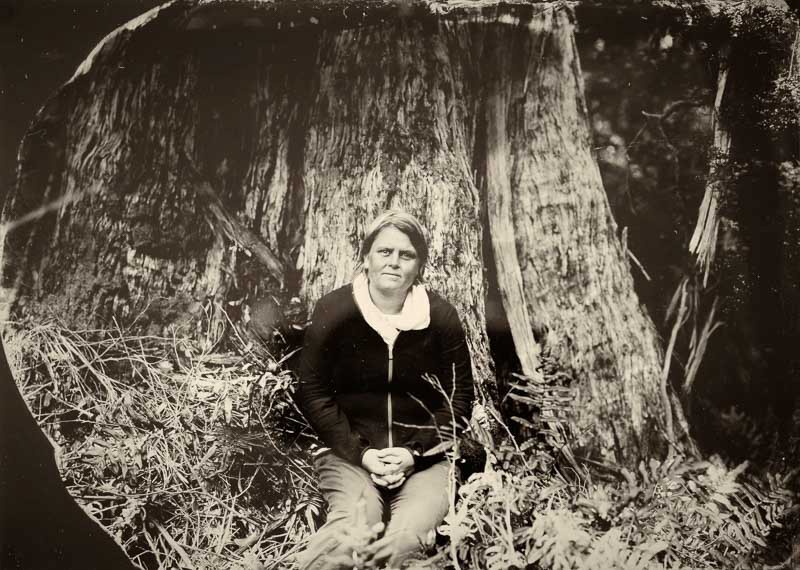
Jenny Weber in the Tarkine. Photo: © Phillip England.
What is happening on the ground at the moment?
This year the Bob Brown Foundation launched a new blockade in the Sumac forest, one small area in the whole of the Tarkine, where we’ve been running a vidual camp or ‘occupation of the forest.’ Since launch, we have been rolling with actions such as tree-sits and snap actions. So far, three people have been arrested, including 21-year-old Hobart student Josh Nichols. We will keep rolling with actions. It’s an operation that is quite taxing, but we have a lot of great volunteers and an excellent staff of campaigners.
Who are the loggers?
The logging company Sustainable Timber Tasmania is the government branch of the department and is responsible for all the logging. They have private contractors who run the logging operation and are the managers of the land. They bring in the police to evict activists.
What is the aim of the campaign?
The aim is to delay logging operations from being able to start. We use different community protest tactics that include bigger groups of people occupying the space, ‘tree-sits,’ as well as snap actions in Hobart, where larger groups protest outside the premier’s office. We include town protesting to engage people who can’t get out into the forest as it is quite inaccessible wilderness in Tasmania.
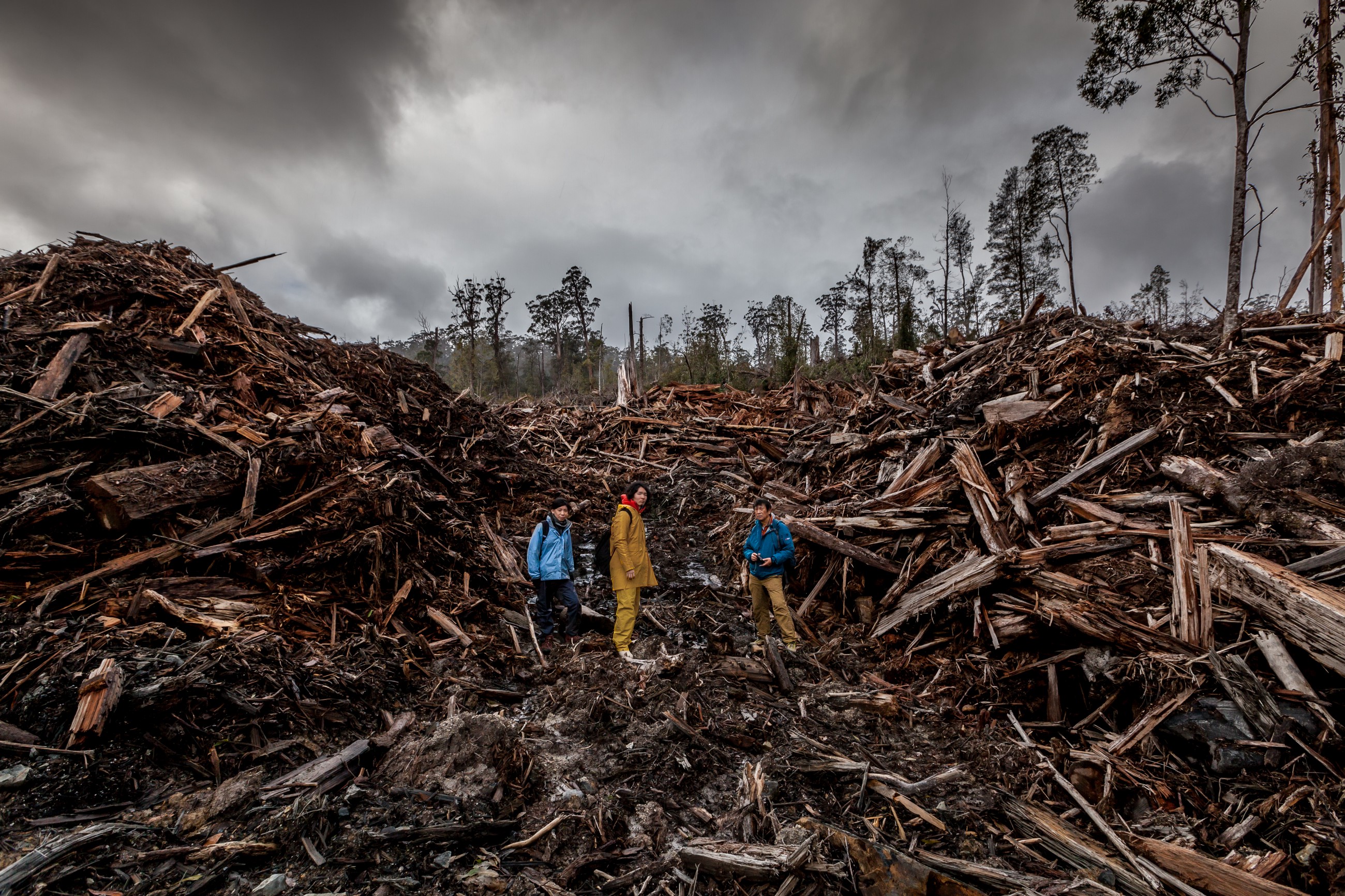
Logged forest in the Tarkine Photo: © Nicole Anderson.
It is a courageous act risking your life for the environment. What does it mean to be an activist?
Bob Brown called Josh ‘one of the brave hearts of the planet’. I have been arrested five times, but you are compelled by the place and the extraordinary fragility of this natural ecosystem. You think to yourself, ‘if this is what I can do for the environment, I will!’ The driver for me is that I’m a white, educated woman in a democracy, and I have the privilege that some people don’t in their nations. They face violence and death threats, and some lose their lives. You stand up and think, ‘I have more freedom and less security risk than most people, so it’s my obligation.’
Why do you think so few Australians are aware of what is happening?
I think in the age of social media, people are bombarded with so many different issues and stories. There are wonderful, thinking people in Australia just trying to survive, pay their mortgage, and look after their kids, and are not accessing the information. I also firmly believe we have such a right-wing media influence in the Australia that its extremely difficult to get, “Tarkine: Peaceful Protestor Arrested” in the news. The goal of our campaign is to break through all that information and get people thinking about the Tarkine.
Why should Australians care?
I think the nature of vanishing intact forests globally, is something significant for people to understand. The science has been in for a while that these ecosystems are critical natural solutions that can mitigate the climate change impacts. What is becoming even more apparent is that flattening these forests is going to contribute to climate change in Tasmania. On-going post-logging burns are contributing to massive greenhouse gas emissions.
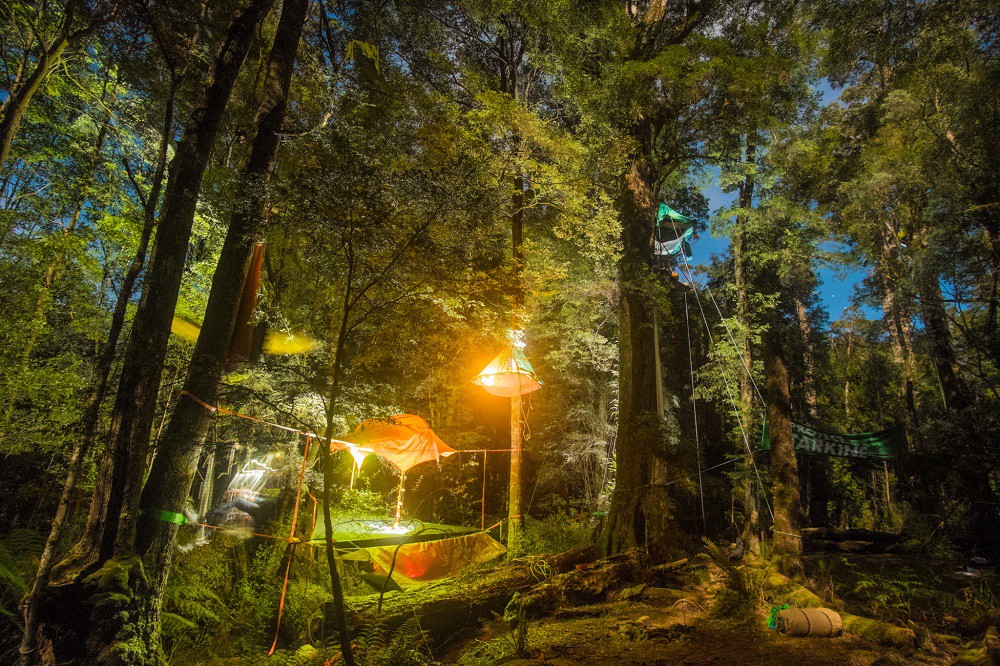
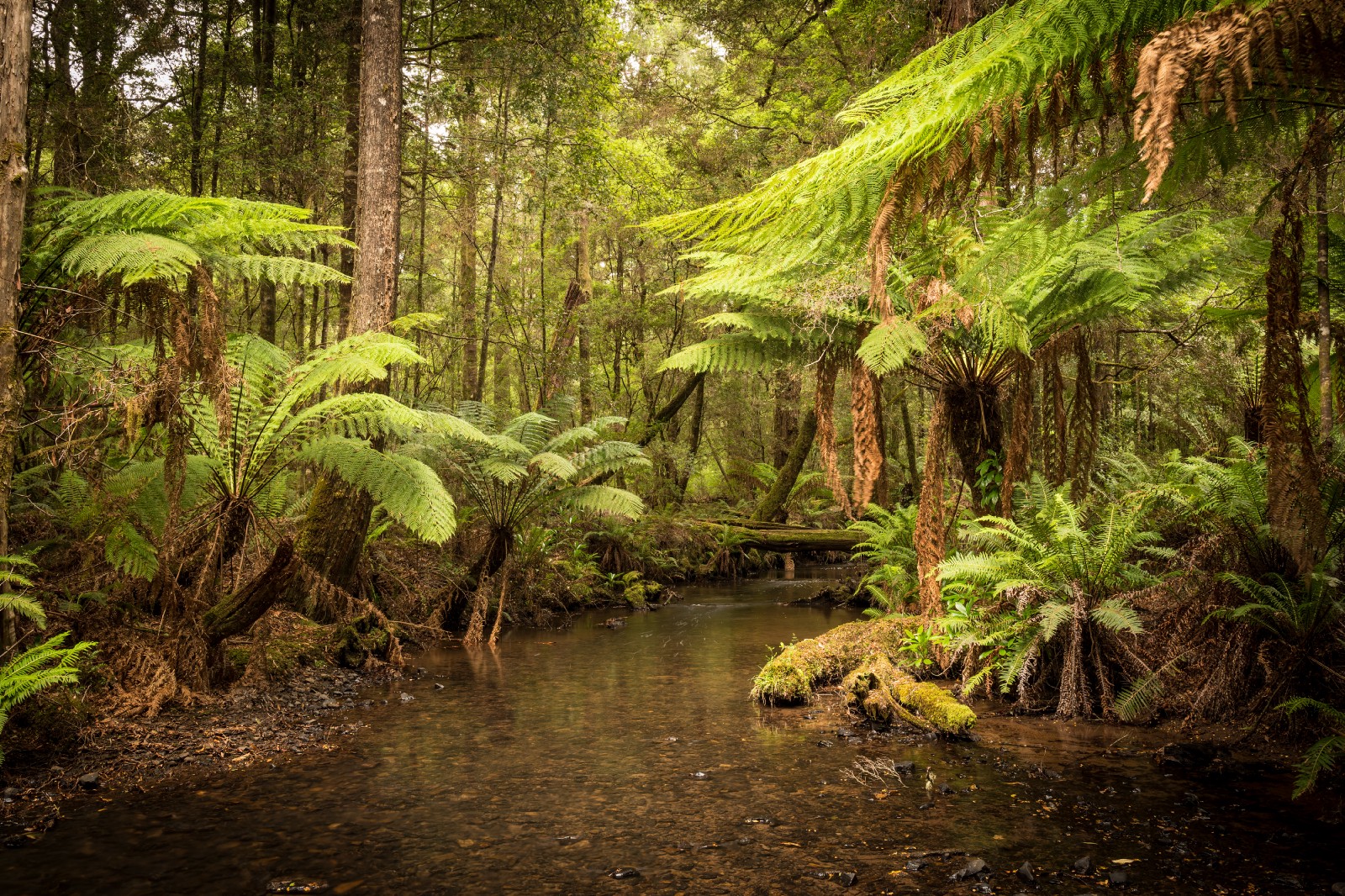
(L) Tree sitters camp in the Sumac forest of the Tarkine. Photo: © Tim Cooper; (R) The pristine Tarkine Temperate Rainforest © Adobe Stock.
What does a clear-fell look like?
It’s a flat piece of land with piles of wood, debris, and giant stumps the size of your bathroom. It is muddy and hot because, in the Tarkine, you have the canopy covering the forest floor and layers and layers of life on that forest floor. Once you clear-fell, you are left with a flattened ecosystem and an open sore in the forest. It’s a terrible wasteland.
What happens to the wildlife that live here?
Unfortunately, science in Australia and around the impacts of logging in Tasmania is underfunded. We know there is an extinction crisis, and we know the Tasmanian Wedge-tailed eagle, the Tassie devil, the Masked owl, the Spotted-tail quoll, and the world’s largest fresh-water crayfish all rely on these intact native forests. Some of those species rely on big hollows in the standing trees that have taken hundreds of years to form. The impact on wildlife is disastrous, and I’m frightened that we don’t understand the full extent of the effects of removing endangered species habitat.
Is it comparable to the plight of the Bornean Orangutan?
We are sure that like the Borneo Orangutan, Tasmanian wildlife is suffering. Sadly, in Tasmania, we have a frightful connection to the plight of the forests of the Orangutan. In 2006, the Ta Aan Malaysian logging company, out of Sarawak, set up in Tasmania to receive timber from Tasmanian forests, and send it over to Borneo. They glue Tasmanian wood in with their tropical hardwood (Orangutan hardwood) and sell it in Japan. They have been here since 2006, receiving tens of millions of dollars from the Tasmanian and Australian governments, when they are a multi-million-dollar company. Sadly, we are not only losing Tasmanian forests but contributing to the loss of forests in Borneo too.
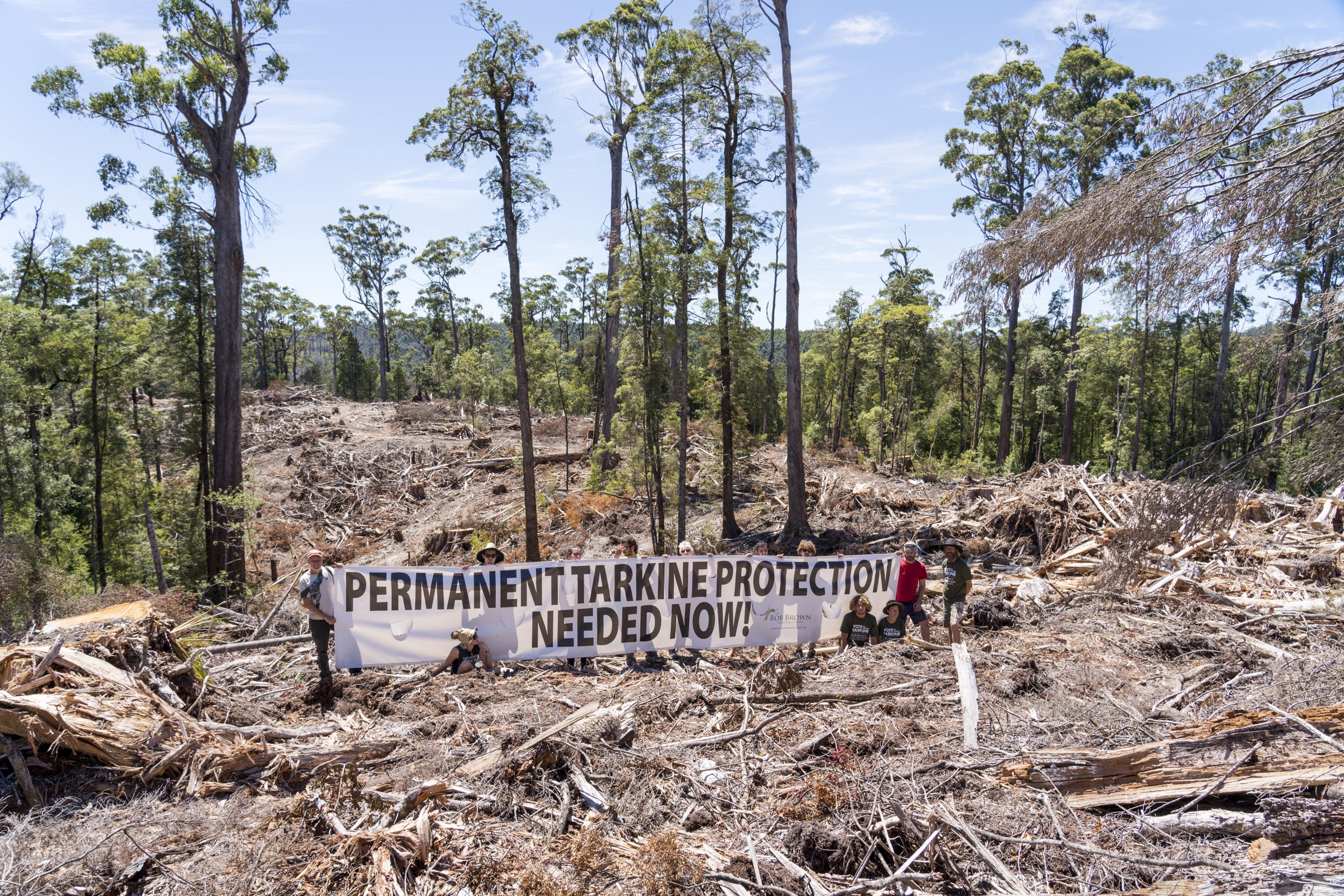
The Tarkine needs permanent protection in the form of World Heritage Listing. Photo: © Bob Brown Foundation.
What is the impact of mining here?
The mining industry has plans for a new mine in the Tarkine, and they are also responsible for a mine here that closed after only eight months of operation, leaving significant acid mine drainage problems. Unfortunately, we have a government bereft of looking after and being custodians of this rainforest. Instead, they are handing over the remote wilderness to companies to destroy.
Why has it not been listed as a World Heritage Site?
The power of the Conservative government, the logging industry, and the mining industry combined have prevented the area from being securely protected. Worse than that, we had some protection gained under John Howard in 2004 (not National Park protection but reserve protection). Unfortunately, our current Liberal State government has reversed that protection and allowed for logging to happen.
What needs to happen to list the Tarkine as a World Heritage site?
We need a Premier to show real leadership and nominate the Tarkine for World Heritage listing, and then the Australian government needs to support that. But, if a liberal Tasmanian government put it up, we’d be confident that a federal Liberal government would recommend it, and that goes to the World Heritage Committee to consider. Then the Tasmanian government would declare it protected as a National Park and return it to Aboriginal ownership. The problem is that it relies on government, and we have such conservative governments that don’t like the environment, nor do they admit climate change is real. On the other hand, the benefit is that it relies on voters, and we live in a democracy, so we do remind people that you can vote for a party that will protect the Tarkine.
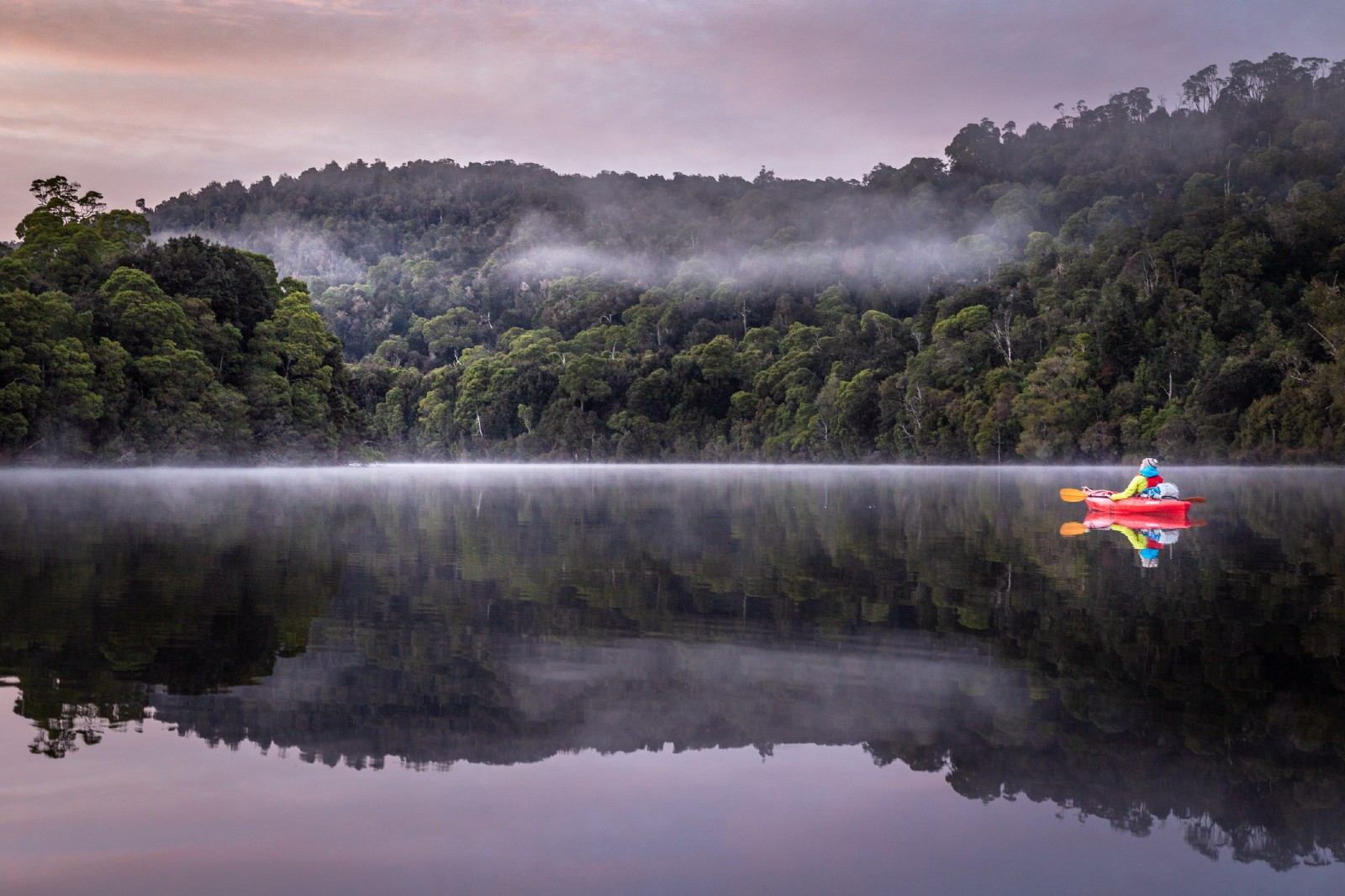
Rainforest clad river in Takayna. © Adobe Stock.
You can help the campaign to protect Takayna as a World Heritage area with a tax-deductible donation. You can also sign the petition and tell the Tasmanian government to nominate takayna / Tarkine for World Heritage protection.
Read more about conservation in Tasmania in the Interview with Jane Hutchinson, CEO of Tasmanian Land Conservancy.
